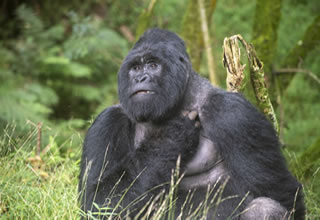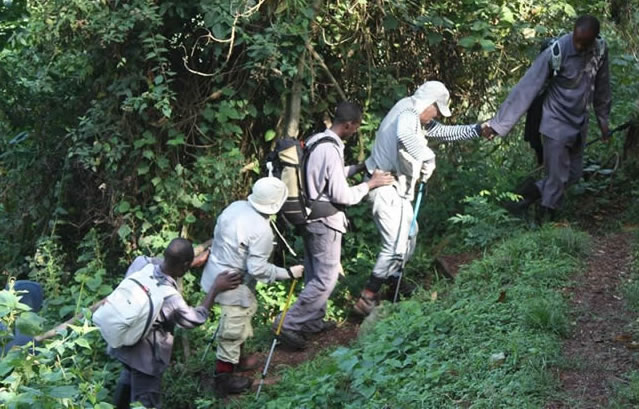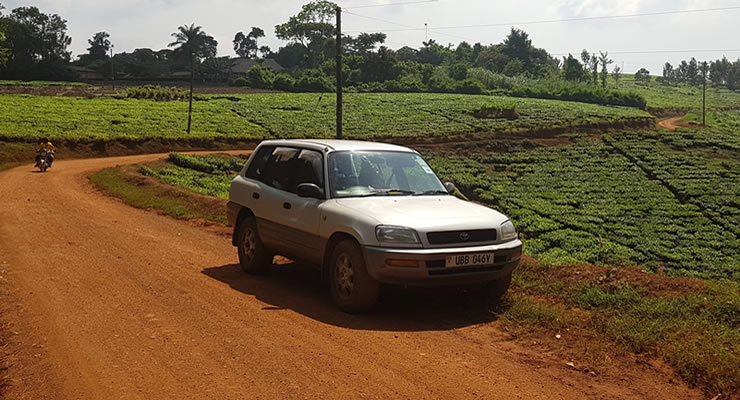
Sustainable Car Rental practices in Uganda
February 17, 2023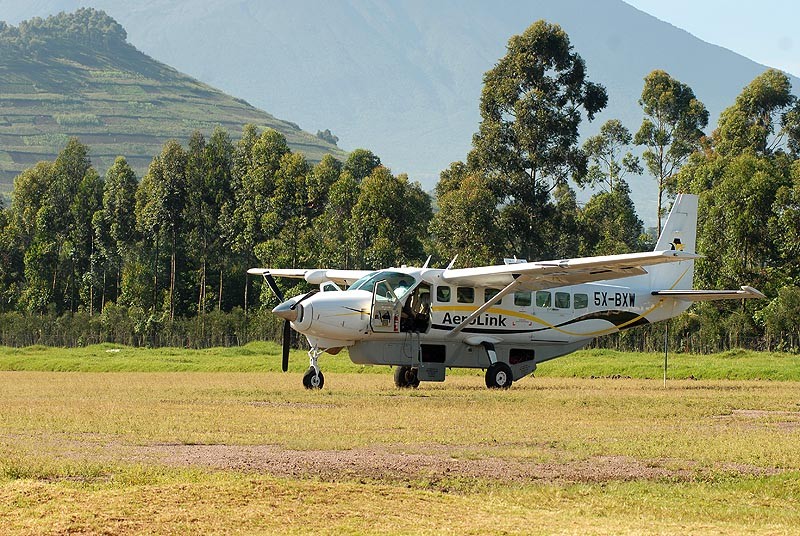
Luxury Safaris in Uganda
April 12, 2023A disability is a physical or mental condition that can make it more difficult or impossible for someone to complete some tasks or participate in some activity. Some people develop disabilities due to advanced age, sickness, Lifestyle choices and personal behaviors, and Musculoskeletal disorders among others.
Gorilla trekking is done in Bwindi Impenetrable National Park and Mgahinga Gorilla National Park. It’s on record that Uganda protects almost half of the world’s existing mountain Gorillas. Other Mountain Gorillas are found in Virunga National Park in the Democratic Republic of Congo and Volcanoes National Park in Rwanda.
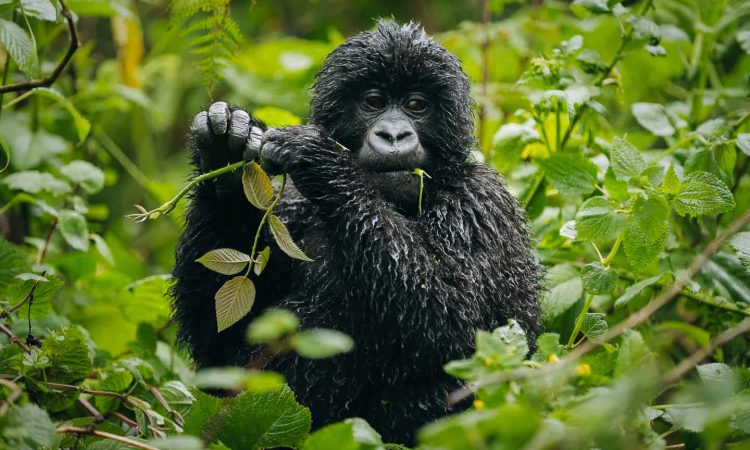
Gorilla Trekking in Bwindi National Park
People who need special treatment/ care during Gorilla trekking include; the physically challenged, senior citizens (aged 60 and above), young persons (16 years and below), and the sick among others. In Uganda, Gorilla trekking is a daily, all-year-round activity and a lifetime activity that everyone should enjoy before death.
For that case, the Uganda government in conjunction with Uganda Wildlife Authority set ways of enabling people with disabilities to encounter Gorillas in their natural habitat. Below are the top ten ways, people with disabilities should meet Gorillas in the natural environment:
Inform Park officials in advance about the state of the clients. Ask your clients about their special needs to prepare for them accordingly. Senior citizens, weak, sick, and physically challenged visitors need porters, sedan chairs, and so on to assist them to meet gorillas with ease.
Hire porters to assist in carrying guests’ luggage, and carry visitors on sedan chairs among others. It’s important for porters to earn a living from Gorilla tourism as a poaching control measure. Some porters used to do poaching to earn a living but today, they are part of the conservation team.
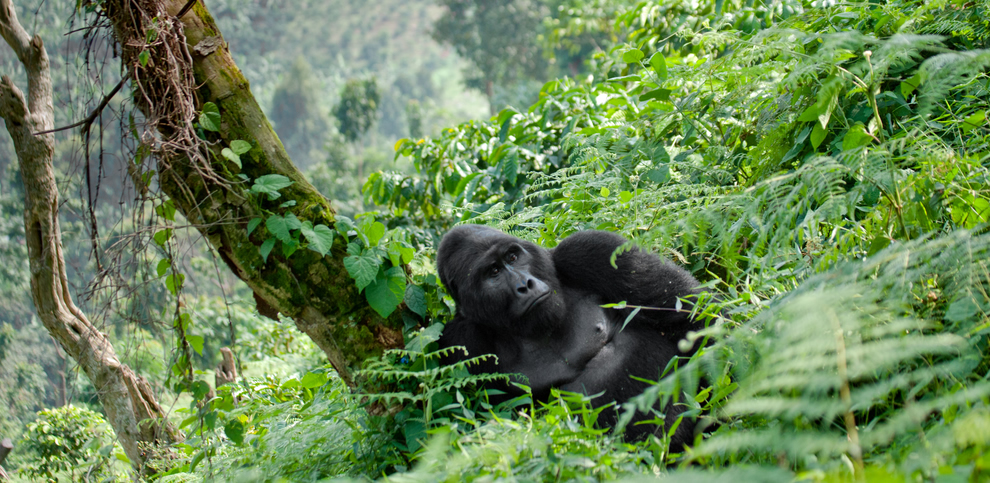
Rwanda Gorilla Tours
Based on where you want to trek Gorillas from, porters are readily available in Mgahinga National Park and in Bwindi Impenetrable National Park’s Buhoma sector, Nkuringo sector, Rushaga sector, and Ruhija sector.
Make use of stretchers/ sedan chair – Some jokers call it an “African ambulance” which is used to carry guests who are not capable of walking long distances to meet gorillas. The cost of lifting guests on sedan chairs is negotiable but ranges from US$300 for four or more porters. To lift a guest, you need a minimum of 4 porters.
Walking stick – they are readily available at each park headquarters. Guests need a walking stick to support them through slippery jungle trails. It should be noted that some trail spots used during gorilla trekking are swampy and thus slippery, especially during the rainy season. The walk sticks are free of charge at Nkuringo Gorilla trekking center, Rushaga Gorilla trekking sector, Buhoma Gorilla Trekking Centre, Nkuringo Gorilla trekking sector, and Mgahinga Gorilla National Park.
Group based on disabilities – people with disabilities should be put in one group and should be handled with maximum care. The ranger guides should know that they are leading people with special needs. The ranger can decide to walk at a slow pace, use shortcuts or choose to meet a nearby gorilla family, and so on.
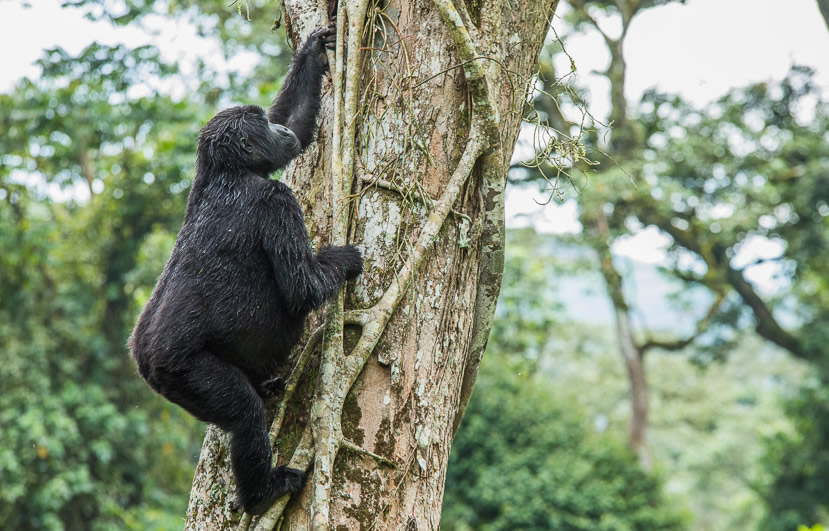
Choose to trek with a nearby Gorilla family – In Bwindi Impenetrable National Park and Mgahinga Gorilla National Park, there are some gorilla groups that colonize areas near the park headquarters. People with disabilities can not be able to walk long distances so, it’s wise to make them trek gorilla families near the park office.
Walk at a slow pace – some senior citizens (60 years and above) cannot walk fast so; the ranger should be able to know that. In 2013, a 94yrs old lady successfully completed a gorilla trek in Bwindi Impenetrable National Park. That means that gorilla trekking is for all irrespective of age, gender, status, and so on.
Use proper gorilla trekking gear – To simplify gorilla trekking, the trekker needs to be equipped with proper gorilla trekking gear like waterproofed shoes, long-sleeved shirts, trousers, insect repellent, garden gloves, sunglasses, warm clothes, and rain jackets among others.
Move with enough safe drinking water for refreshment– it’s important to rehydrate your body during the walk to meet gorillas. The hustle of searching for gorillas in their natural habitat involves climbing hills and sloping valleys for some hours.

